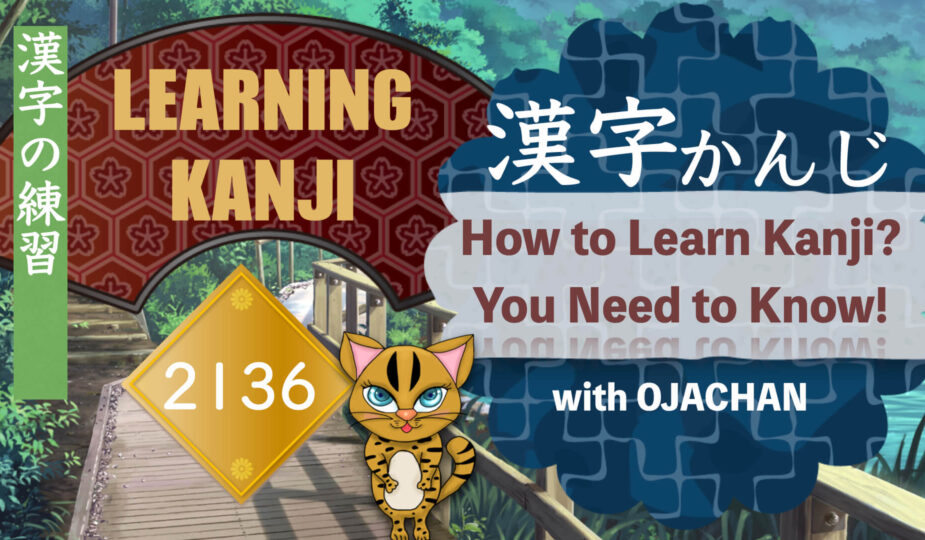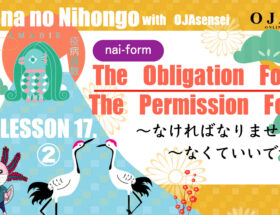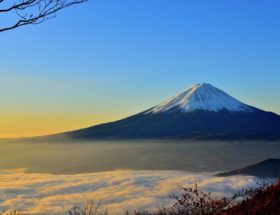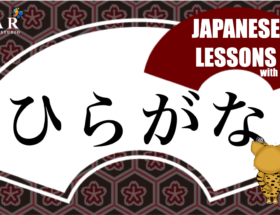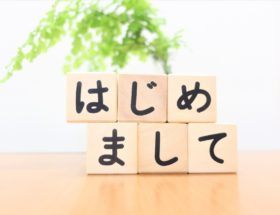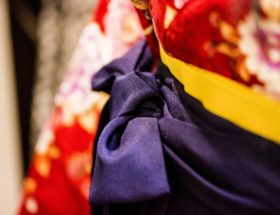こんにちは、おじゃちゃんです。
Vocabulary is the most important in language study. Kanji appear 2,136 words on JLPT. You have to practice kanji a lot because you need to learn the way of reading and using it, and how to write the stroke order and the radical in a kanji.
Let’s learn kanji as you learn the vocabulary!
KANJI Dictionary 2500 (Japanese)
Customer Reviews : ★★★★☆
Publisher : ナツメ社 (July, 18th 2019)
CONTENTS
How to Learn Kanji?
If you want to live in Japan, you might need to write your address at the city hall or to write your experiences for your resume to get your job. Or if you learn Japanese properly, you might understand the video without subtitles or be able to talk to your Japanese friends in Japanese with kanji.
So the way of learning kanji is very important.
On JLPT, Japanese learners usually learn 2,136 kanji, which is called “常用漢字 jouyou-kanji”, which are used at public office and newspapers and so on.
There are 4 items to learn kanji.
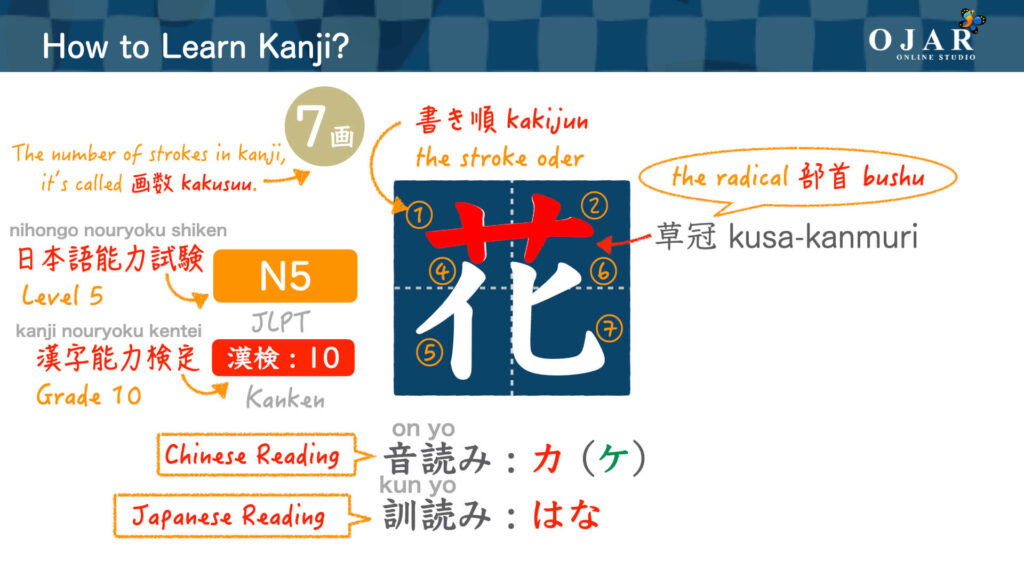
We learn “書き順 kakijun the stroke order”, “音読み onyomi”, “訓読み kunyomi”. and “部首 bushu the radical” for one kanji.
We practice writing kanji when we are age 6 entering elementary school.
You can learn kanji as you use them because there are a lot of things to learn for one word.
I’m going to introduce to you how to learn kanji here!
How to Use a Notebook?
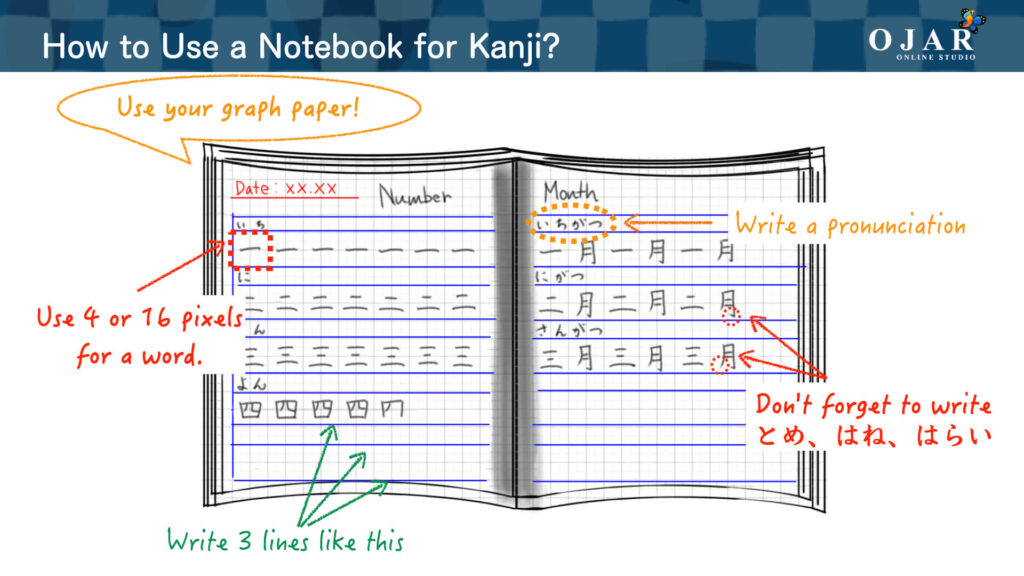
You should always use graph papers to keep a beautiful balance of kanji.
Use your 4 pixels, or 16 pixels when your pixels are too small to write, in graph papers.
You can check the kanji how far it is from the vertical line or the horizontal line while practicing.
Japanese kids also use graph papers to practice kanji till they improve it.
How to Learn Kanji? | The Stroke Order
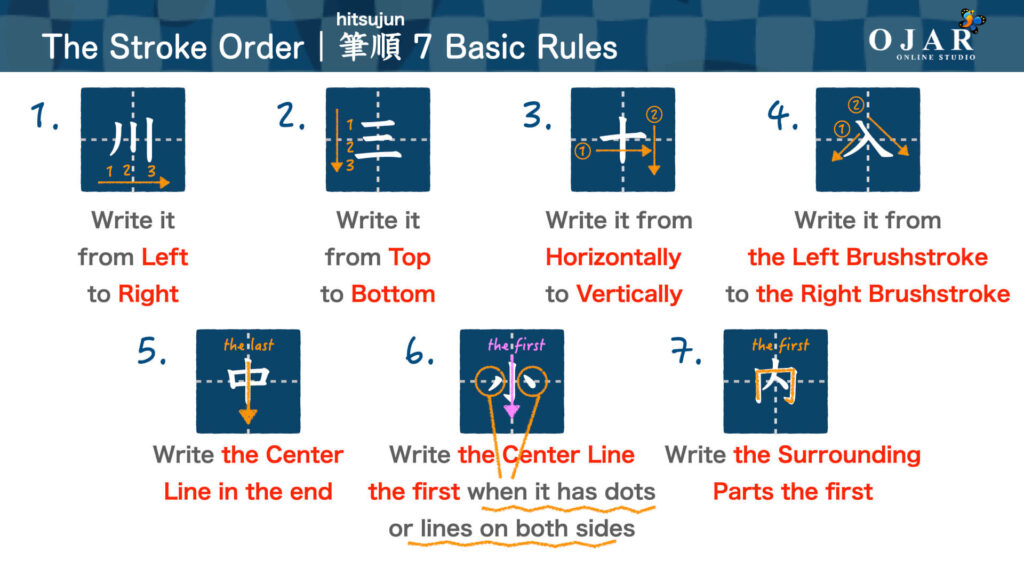
It’s going to be the habit once you have learned the way of learning kanji.
To write kanji correctly and properly, “書き順 kakijun the stroke order” is very important.
Each kanji has the stroke order. We write them from left to right. And almost all of them are written from top to bottom and from horizontally to vertically.
If you practice kanji as you like, it will look like awful handwriting as well as a wrong kanji.
Besides, your Japanese will change beautifully so much by being aware and keeping in mind.
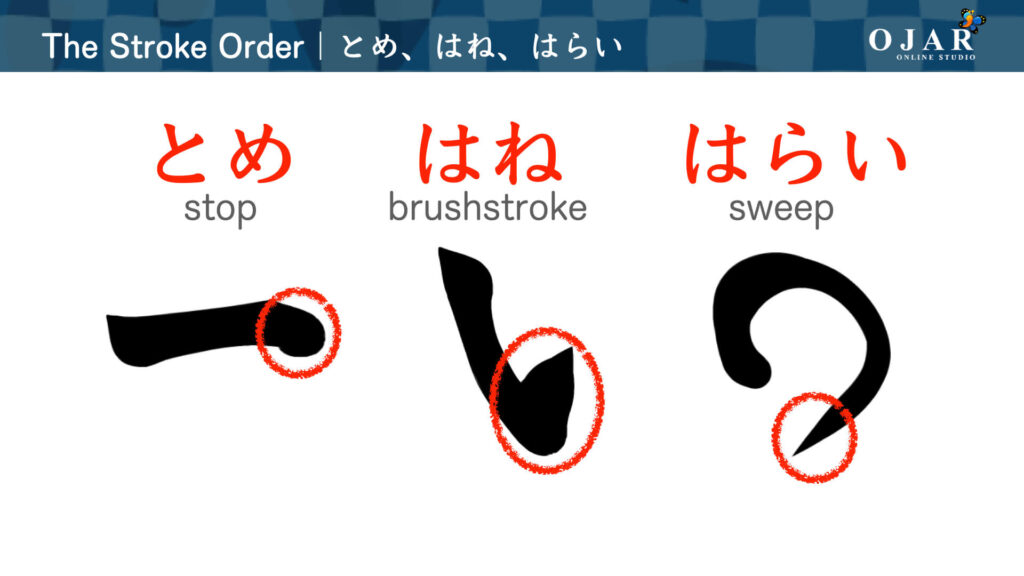
In Japanese education for Japanese children, if you don’t add “とめ, はね and はらい”, it is regarded as wrong on the exam in Japanese even if you write a correct kanji.
Plus, we only observe not only handwriting of myself but also others.
If you write beautiful handwriting, we regard you as a highly organized person. Conversely, especially elder people, if you write awful handwriting, we regard you as a sloppy person.
Writing characters even affects defining your personality for Japanese people.
That, for all of the Japanese people, is not just a tool to express your intentions.
We see your handwriting not only as a way to communicate, but also to convey a deeper meaning.
We give importance to calligraphy and manners because it is deeply rooted in Japanese culture in order to preserve and convey traditions.
Though I’m considered to have old-fashioned ideas, I also want you to experience our culture through learning Japanese.
Let’s learn kanji stroke order and “tome, hane, harai” the right way.
How to Learn Kanji? | Onyomi And Kunyomi
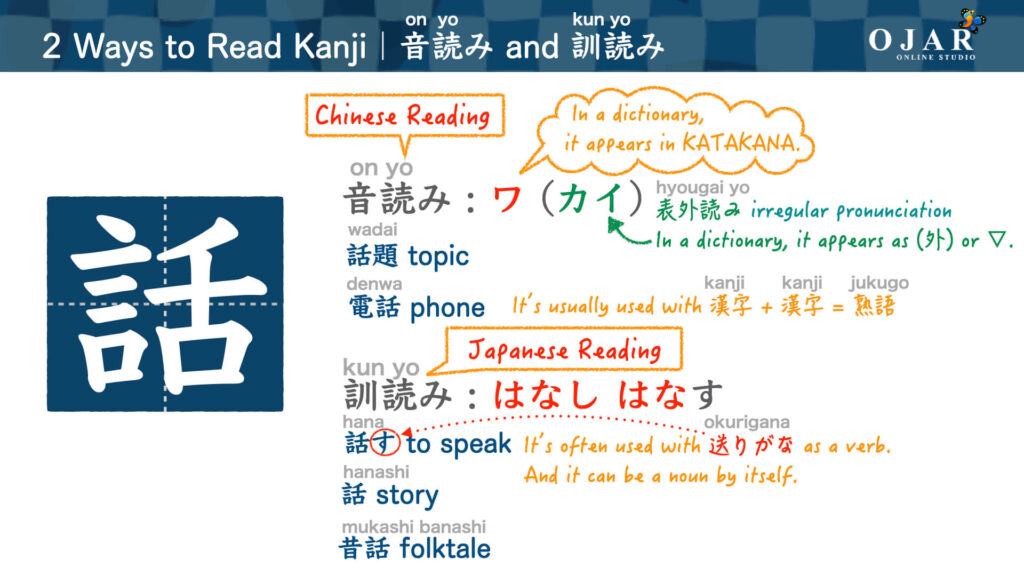
There are two ways to read kanji, “音読み onyomi” and “訓読み kunyomi”.
Originally, Kanji came from China in around 4th century, 音読み origins from China, 訓読み origins unique pronunciation in Japan.
Continuous 2 or more kanji are the most likely to pronounce as “音読み”.
On the other hand, In the case of Hiragana following kanji, the Hiragana is called “送り仮名 okurigana”, the kanji is the most likely to pronounce as “訓読み”.
We combine those 2 pronunciations to express various words.
| ❶ 音読み+音読み | ||
|---|---|---|
| 先生 teacher sensei | 天気 weather tenki | 家族 family kazoku |
| ❷ 訓読み + 訓読み | ||
|---|---|---|
| 青空 blue sky aozora | 言葉 word kotoba | 木箱 wooden box kibako |
| ❸ 音読み+音読み & 訓読み + 訓読み | ||
|---|---|---|
| 草花 flower and plant souka kusabana | 春風 spring wind shunpuu harukaze | 山中 in the mountain sanchuu yamanaka |
| ❹ 音読み+ 訓読み | ||
|---|---|---|
| 王様 king ousama | 夜桜 cherry blossom at night yozakura | 笑顔 smile egao |
| ❺ 訓読み+音読み | ||
|---|---|---|
| 五日 5th day itsuka | 場所 place basho | 友達 friend tomodachi |
| Exceptions | ||
|---|---|---|
| 昨日 yesterday kinou | 梅雨 rainy season tsuyu | 巴里 Paris pari |
Pronunciation is the most difficult point on learning kanji. Even Japanese people sometimes make a mistake too.
To solve this problem that the way of reading kanji, it is important for Japanese learners to read books, watch movies or anime with Japanese subtitles, what they like, and have fun, as much as possible you can.
In fact, in recent years, we hardly have opportunities to write something on paper due to the development of the technology of the internet and so on than before.
If you are a person who just wants to be able to communicate in Japanese, you should take priority over learning kanji by many reading picture books or watching than writing kanji.
Let’s try to expose yourself to Japanese every single day and improve your vocabulary!
How to Learn Kanji ? | The Radical
Kanji is a very interesting character. It can express the meaning with only one kanji.
We can divide kanji into “部首 bushu”.
There are 7 groups to classify kanji.
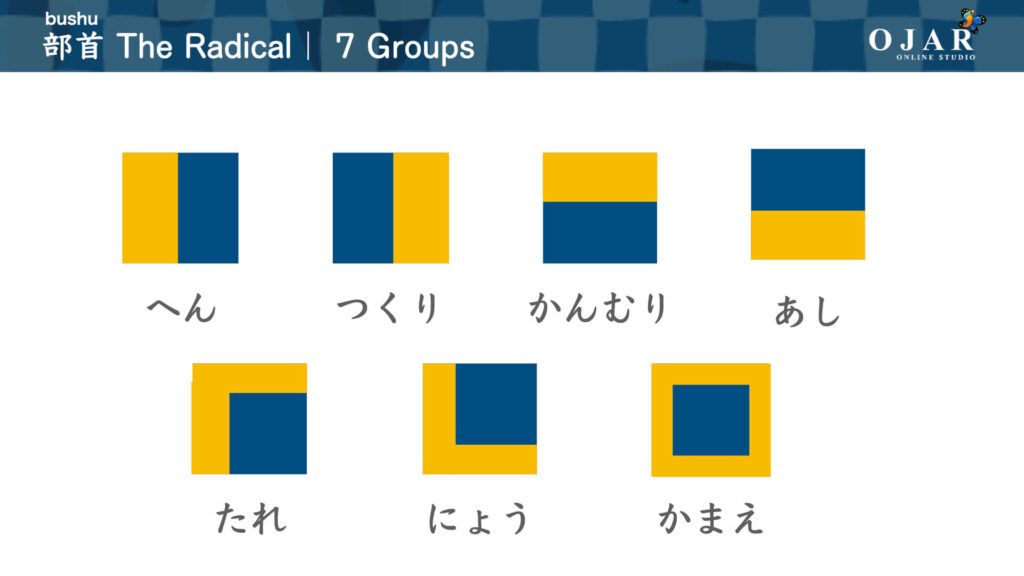
We create a new kanji by joining various parts together!
The parts change the name depending on the position. It is fixed to the place of each part.
For instance, kanji meaning of the plant is made with “木へん ki-hen wood”,
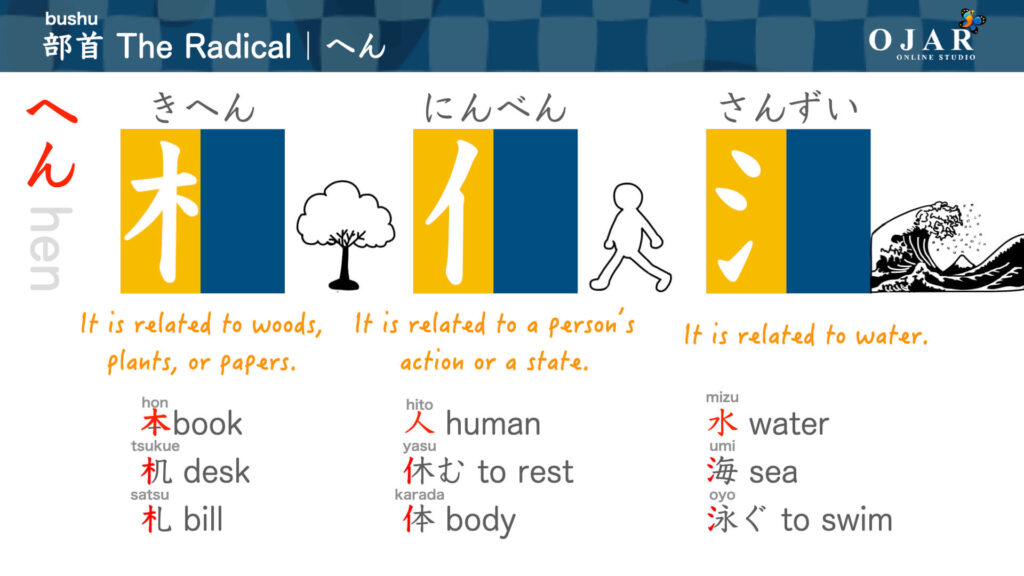
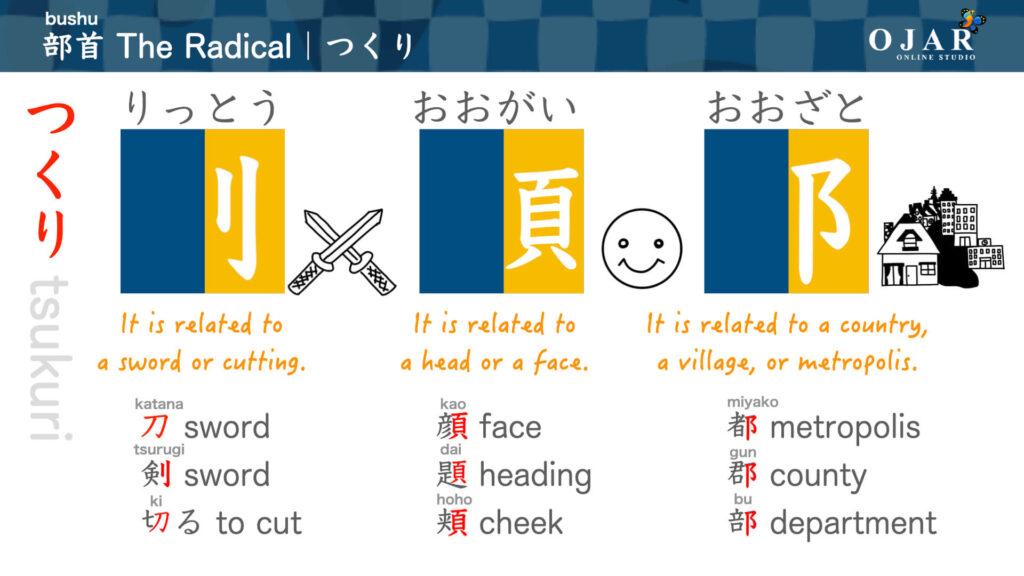
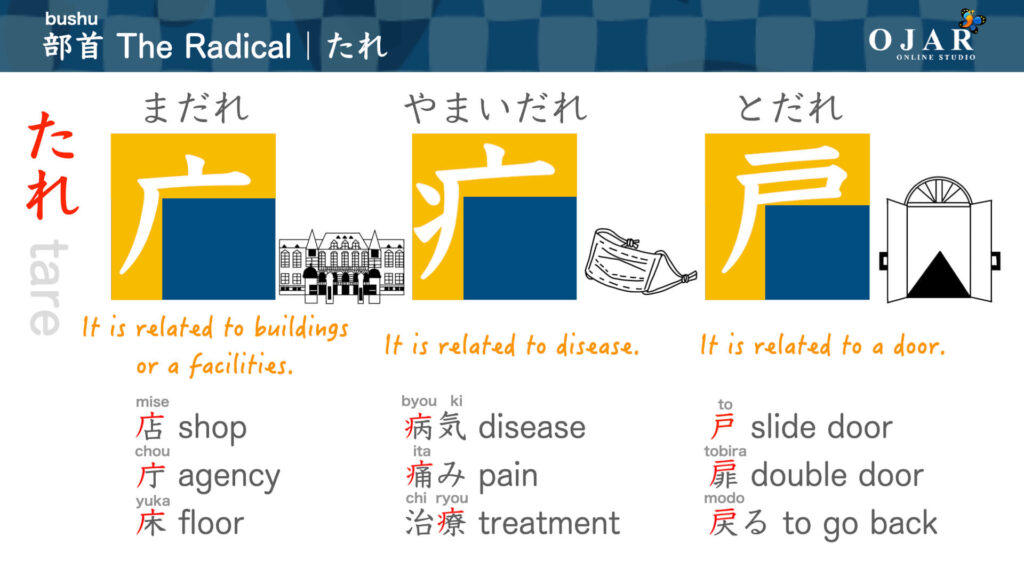
kanji meaning of the weather is made with “雨かんむり ame-kanmuri rain”.
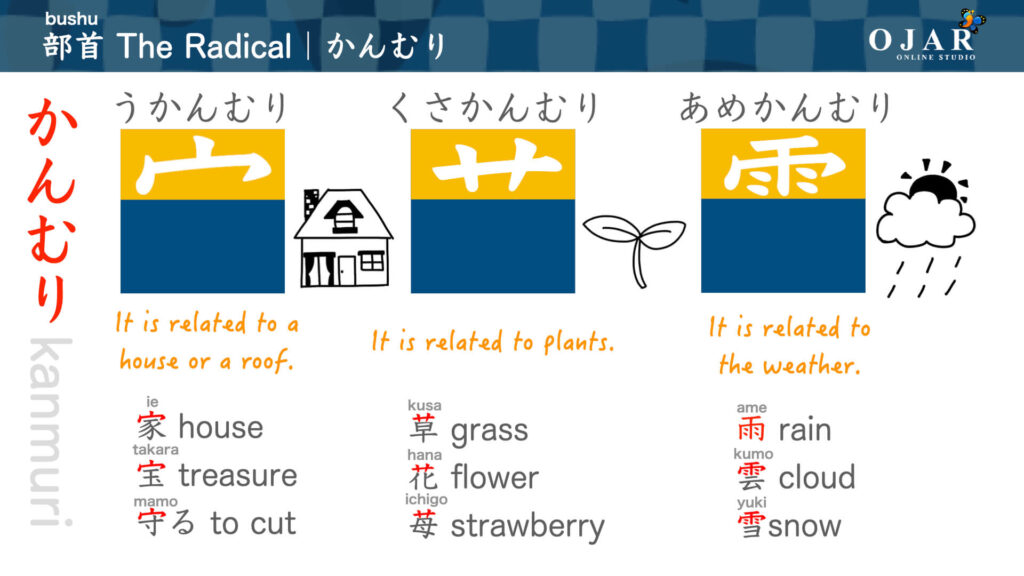
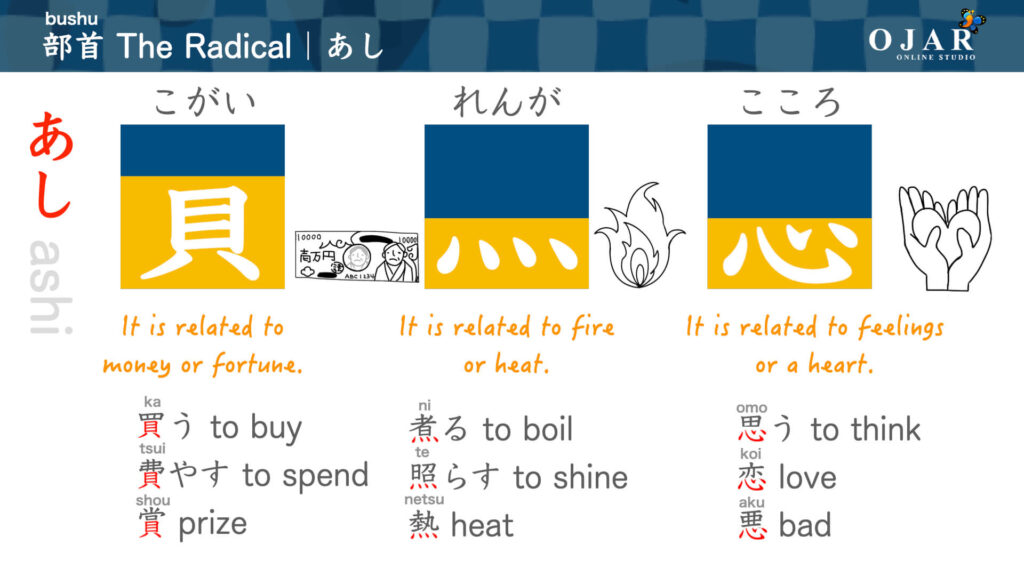
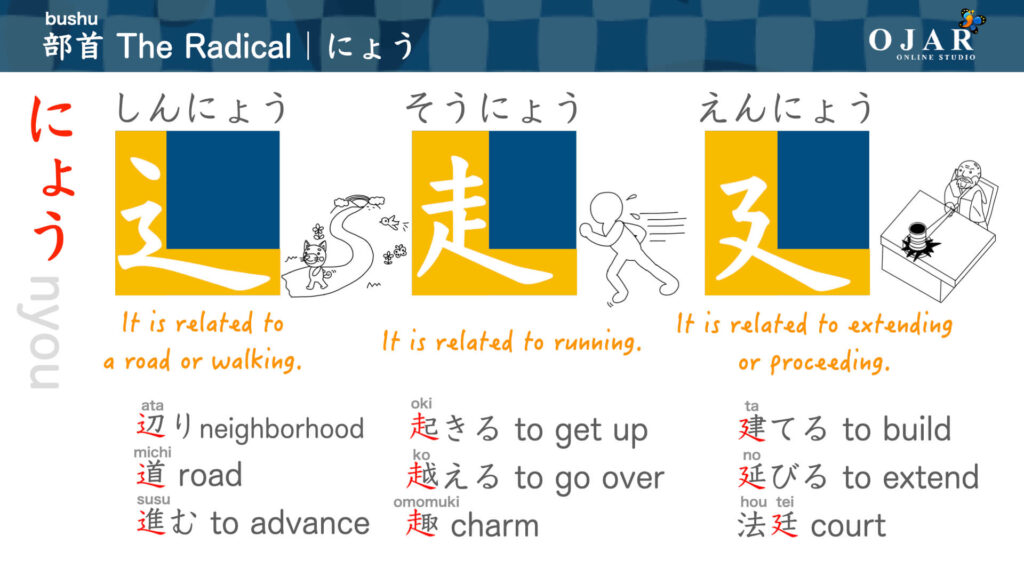
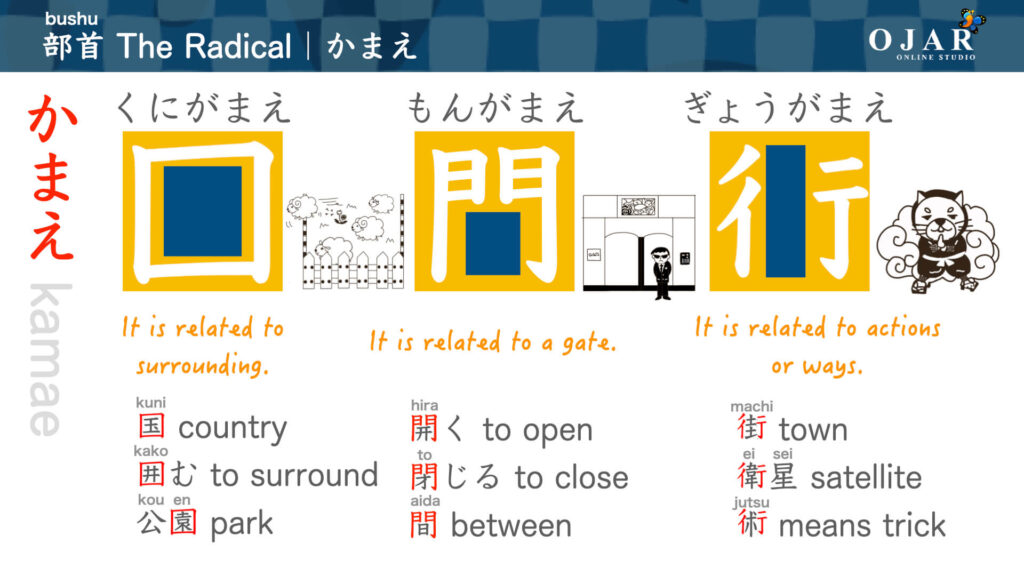
Even if you don’t know the kanji, you can suspect what the meaning is.
Though not all of the kanji has meaning, you can find a lot of things if you see the kanji carefully.
You can enjoy learning kanji more by learning while thinking about the structure.
A calligrapher 武田双雲 Soun Takeda, Takada’s arts are so amazing.
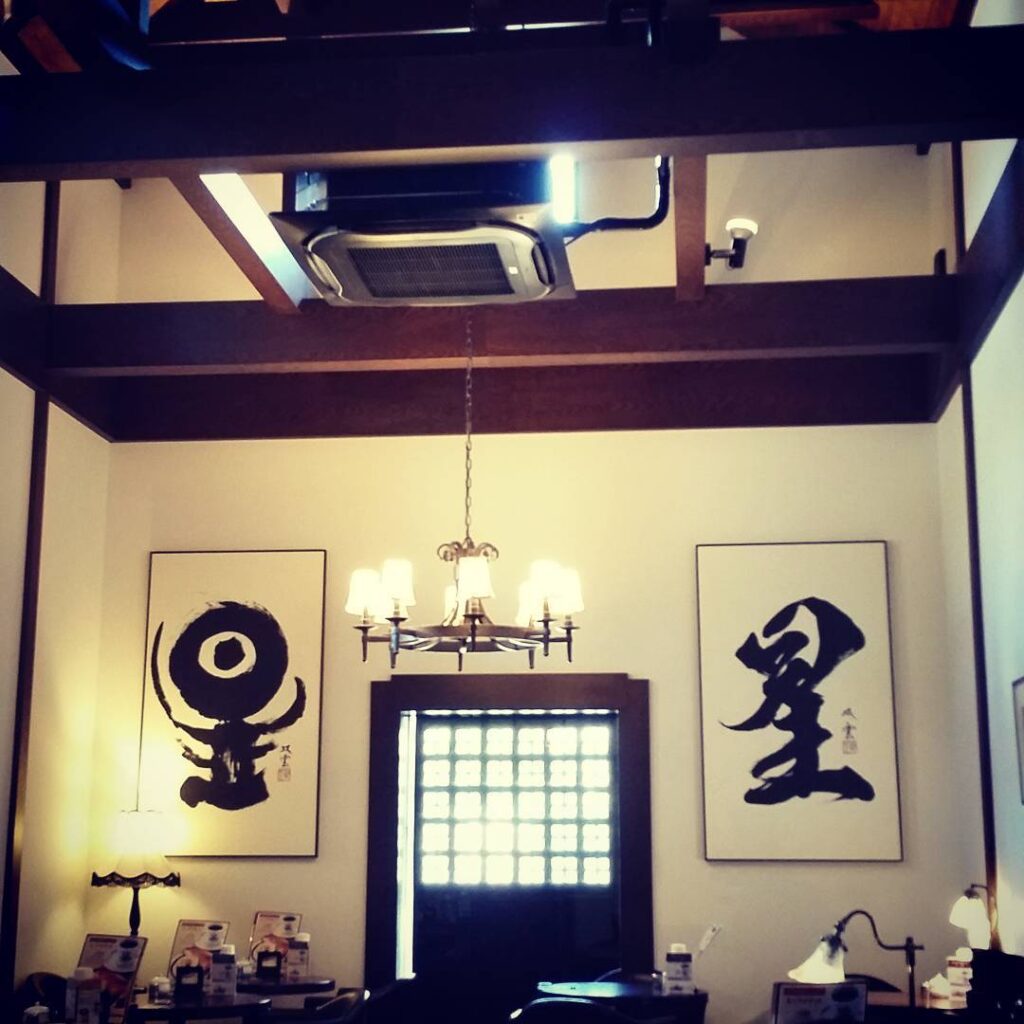
It’s exactly the star, I can imagine the star which goes around the sun.
You can find it on the wall of “星野珈琲店 Hoshino Coffee” if you have a chance to go to Japan, you too, please try and go once by all means!
Besides, you can memorize kanji faster by learning the radical. The radical appears again and again, so it’s easy to memorize and understand.
However, the similarity is not always useful to learn kanji.
Japanese children often make a mistake on kanji writing tests because the looking of kanji is too similar.
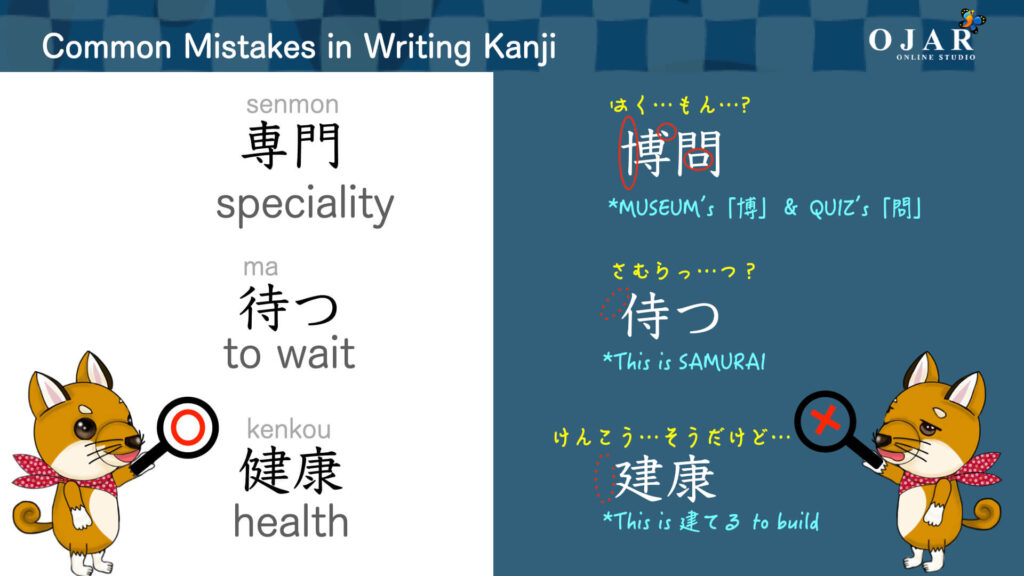
But even so, learning the radical is the clue to memorize kanji faster and more effective.
How Many Kanji Should You Learn on JLPT And Kanken?
We express Japanese with Hiragana, Katakana and kanji.
In fact, there are approximately 50,000 kanji in Japanese but we usually use “常用漢字(joyo-kanji) + 人名漢字( jinmei-kanji kanji) for the personal names” around 3,000. But you don’t have to memorize all.
If you are an advanced level of Japanese, you can challenge to 6,000 kanji characters through “漢字能力検定(漢検 kanken)”.
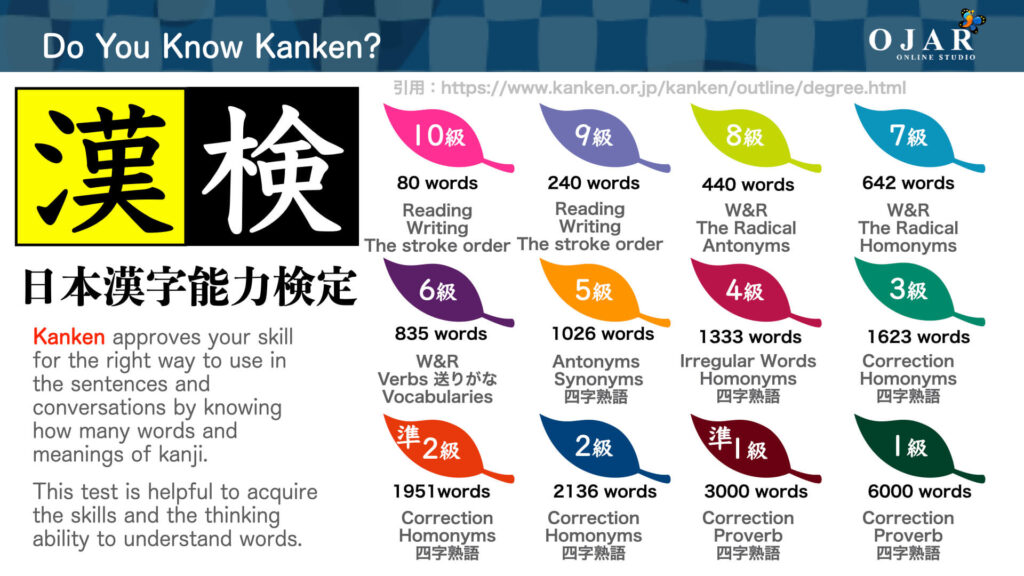
2136 kanji characters are the same kanjis learned by Japanese children at the age of 15, these words are mainly used for daily life.
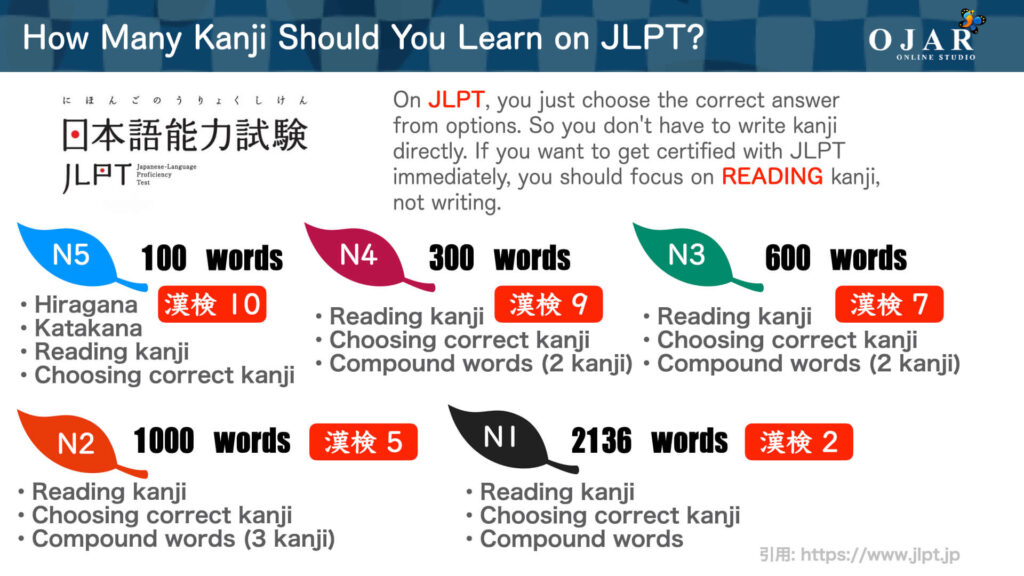
Kanji is the tool can tell YOUR HEART and THE MEANING.
It’s hard to learn, so I’m going to introduce kanjis to you to have fun!
Okay, that’s all for today!
Good luck your kanji exercise!
KANJI Dictionary 2500 (Japanese)
Customer Reviews:★★★★☆
Publisher : ナツメ社 (July, 18th 2019)
THE NEXT LESSON is:
Kanji Exercise 1 | number

